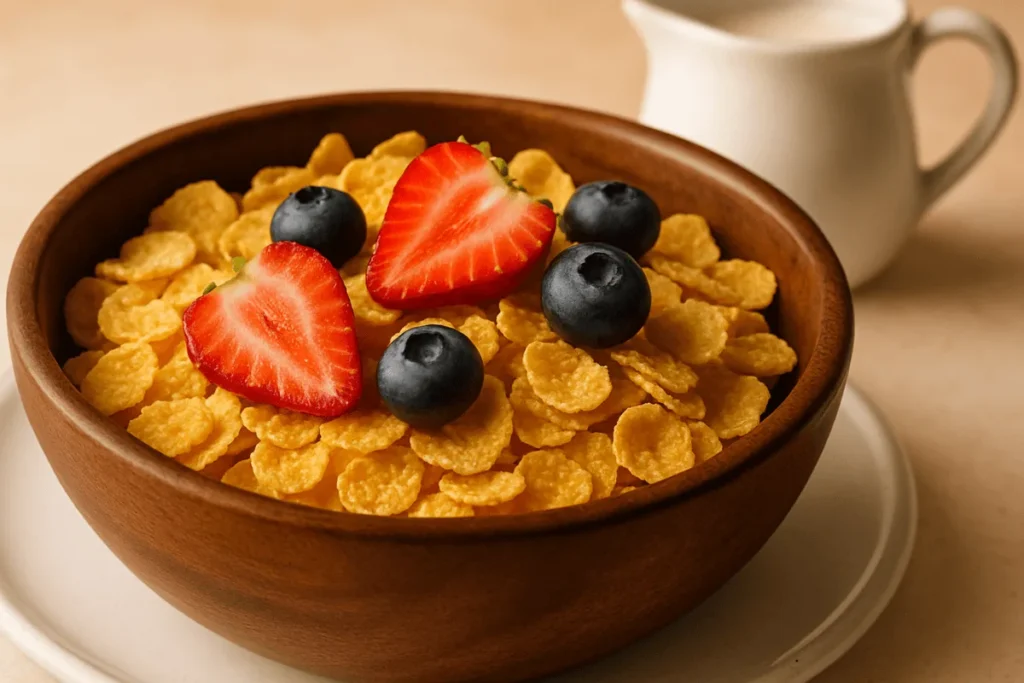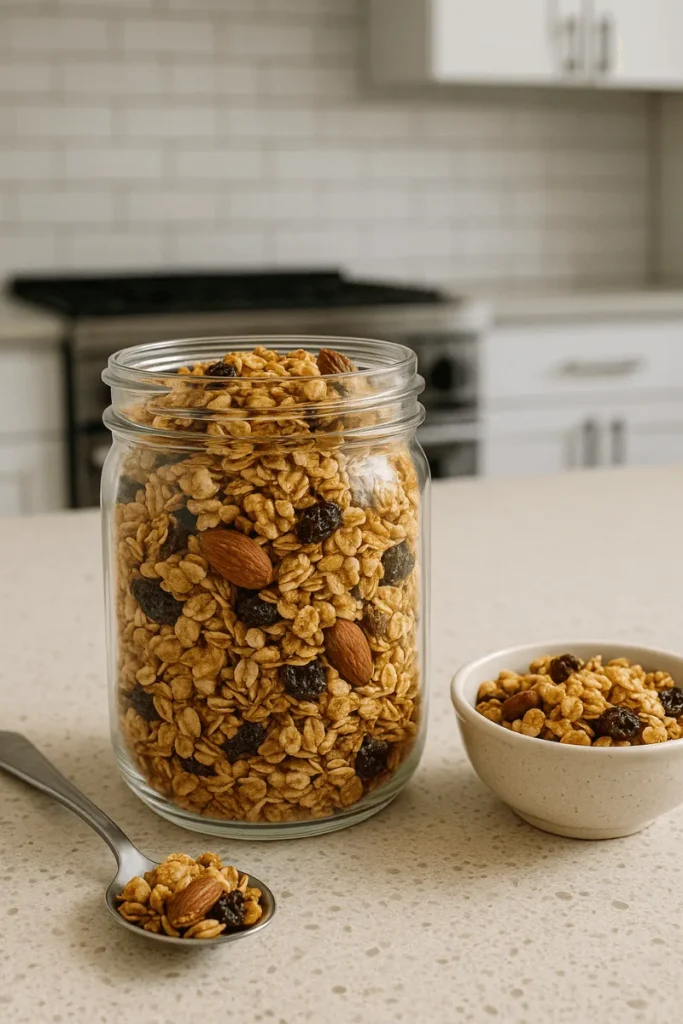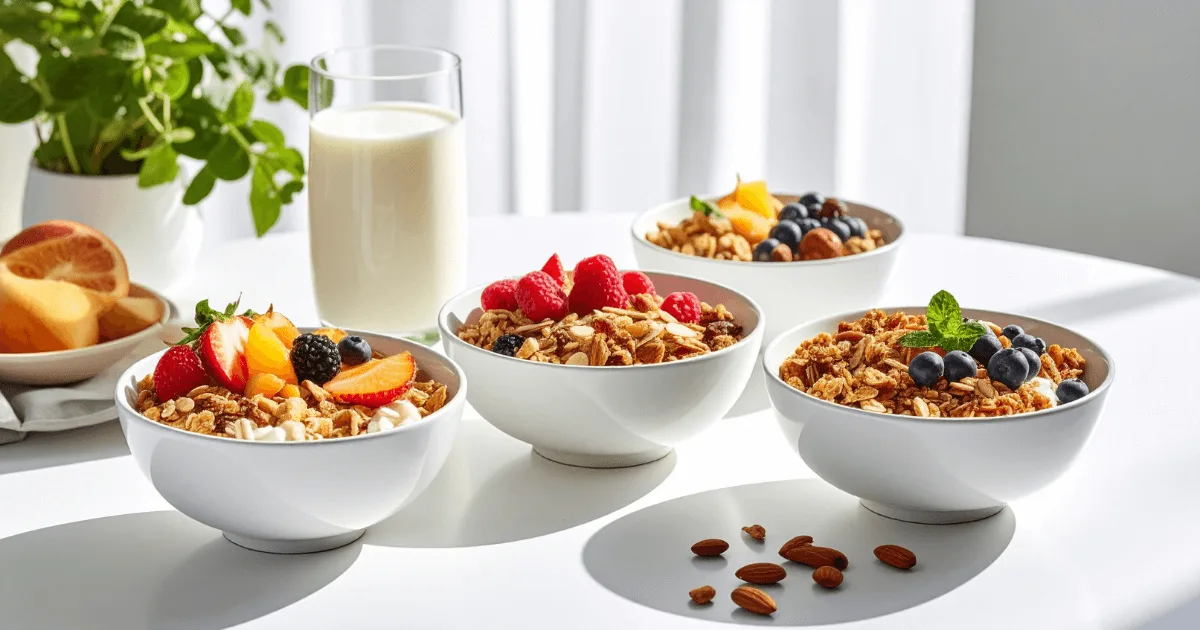Walk into any grocery store these days, and the “gluten-free” aisle looks like it’s taken over half the store. What used to be a tiny shelf for people with celiac disease or gluten sensitivity has turned into a goldmine for health-conscious shoppers. And what’s one of the biggest stars of the gluten-free takeover? Cereal.
Yep, gluten free cereal is now everywhere — promising a safe, delicious start to your day. But here’s the real question: are they good for you… Or just clever marketing wrapped in a colorful box?
In this guide, we’ll break down what “gluten-free” actually means, how to spot the healthy stuff, and take a close look at three big names — Reese’s Puffs, Three Wishes Cereal, and Kix. By the end, you’ll know which ones are worth adding to your morning routine… and which should stay in the “treat yourself” category.
Table of Contents
Understanding Gluten Free Cereals
What Does “Gluten-Free” Really Mean?
The sticky protein known as gluten is found in wheat, barley, and rye. For people with celiac disease or gluten sensitivity, even a tiny crumb can cause serious tummy trouble, nutrient issues, and other health problems.
To qualify as ‘gluten-free’ in the U.S., a product must have gluten levels below 20 parts per million, which is a minuscule quantity. Packaging can feature different varieties of gluten-free labels.
- Gluten-Free – Meets the FDA’s under-20-ppm rule.
- Certified Gluten-Free – Tested by an outside group (like GFCO) and usually even stricter, under 10 ppm.
- Made Without Gluten Ingredients – No wheat, barley, or rye added, but there might be cross-contamination during production.
If you’re extremely sensitive, “Certified Gluten-Free” is your safest bet.
How to Tell if a Cereal is Gluten-Free
Not every cereal shouts “GLUTEN-FREE!” on the front, so here’s your detective checklist:
- Check the label — obvious, but worth saying.
- Read the ingredients — watch for sneaky stuff like malt flavoring (barley) or wheat starch.
- Google it — brands often explain their gluten-handling process online.
- Employ a Nima Sensor — a handy gadget that spots gluten in your food.
Important Nutrients to Seek in Gluten Free Cereal Options
Just because cereal is gluten-free doesn’t mean it’s healthy. Some are candy in disguise. Here’s what you should look for:
- Fiber – Supports digestive health, ensures fullness, and regulates blood sugar. Target 3g or more per serving.
- Protein – Keeps you full longer and helps repair muscles. Chickpeas, quinoa, and amaranth are great sources.
- Vitamins & Minerals – Iron, magnesium, folate, and vitamin D are especially important in gluten-free diets.
| Ingredient | Fiber Content | Protein Content | Notable Nutrients |
|---|---|---|---|
| Oats | High | Medium | Iron, B vitamins |
| Quinoa | Medium | High | Magnesium, manganese |
| Rice | Low | Low | Selenium, manganese |
| Almonds | High | High | Vitamin E, magnesium |

The Big Question: Are These 3 Gluten Free Cereals Healthy?
1. Reese’s Puffs
- Type: Corn-based puffs with peanut butter and chocolate flavor
- Gluten-Free Status: No gluten ingredients, tested gluten-free, but not certified
- Nutrition: Loads of sugar, not much fiber or protein
Verdict: Technically gluten-free, yes. But let’s be real — this is dessert disguised as breakfast. Fun for the occasional treat, not your daily fuel.
2. Three Wishes Cereal
- Type: Chickpea-based, high-protein, low-sugar cereal
- Gluten Free Status: Certified gluten-free, grain-free, vegan, dairy-free
- Nutrition: 8–9g protein per serving, good fiber, low sugar
Verdict: Probably the healthiest option in the gluten free cereal aisle. Keeps you full, keeps your blood sugar steady, and works for a variety of different diets. A legit breakfast winner.
3. Kix
- Type: Corn-based puff cereal
- Gluten Free Status: Used to be safe, but now says “may contain wheat” (as of Sept. 2023)
- Nutrition: Low sugar, but otherwise pretty basic nutritionally
Verdict: Once a gluten-free go-to, now risky if you have celiac or are super sensitive. It might be fine for some, but it’s not worth the gamble if you’re strict.

Other Healthy Gluten Free Cereal Brands Worth Trying
- Nature’s Path – Mesa Sunrise Flakes, EnviroKidz Gorilla Munch
- Barbara’s – Puffins Honey Rice, Brown Rice Crisp
- Love Grown Foods – Bean-based Power O’s
- Cascadian Farm – Organic Berry Vanilla Puffs
- One Degree Organics – Sprouted brown rice cereals
- Purely Elizabeth – Ancient grain-based granola and cereals
- Catalina Crunch – Keto-friendly, high protein, low carb
Cereals to Avoid on a Gluten-Free Diet
These cereals might look safe, but they either contain gluten or risk contamination:
- Frosted Flakes
- Most Corn Flakes brands
- Kellogg’s Rice Krispies
- Cinnamon Toast Crunch
- Apple Jacks
Tips for Choosing the Right Gluten Free Cereal
- Choose whole grains such as quinoa, buckwheat, millet, and amaranth.
- Confirm that there are at least 3 grams of protein and fiber in every serving.
- Keep sugar under 8g per serving.
- Look for certifications if you’re sensitive.
Homemade Gluten-Free Cereal Ideas
Want to skip the aisle and make your breakfast? Try:
- Granola with gluten-free oats, nuts, and honey
- Quinoa puffs with cinnamon and almond milk
- Overnight oats with chia seeds and berries
- Baked buckwheat clusters with maple syrup

FAQ
What does “gluten-free” really mean in cereal?
No wheat, barley, or rye. Instead, they use gluten-free grains like corn, rice, quinoa, or oats that are safe for you.
Is Kellogg’s Rice Krispies gluten-free?
Nope, because of malt flavoring from barley. But other brands make safe crispy rice cereals.
Which cereals are naturally gluten-free?
Think corn, rice, quinoa, buckwheat, millet—you get the idea. Brands like Cheerios (some types), Chex, and Fruity Pebbles are good candidates.
Do oats have gluten?
They’re naturally gluten-free but can get contaminated during processing, so always pick oats labeled gluten-free if you’re sensitive.
Can peanut butter have gluten?
Normally, no. But it’s good to check the label just in case.
What happens if you stop eating gluten?
If you’re sensitive, your tummy will thank you with less bloating and discomfort. For others, it’s more about personal choice and lifestyle.
Conclusion
The gluten free cereal aisle offers a range of options, from sugary treats to genuinely healthy choices.
- Reese’s Puffs – Tasty, yet more like a dessert than a morning meal.
- Three Wishes Cereal – Protein-packed and genuinely good for you.
- Kix – Used to be safe, now questionable for strict diets.
If you want steady energy, better digestion, and actual nutrition, stick to whole-grain or high-protein gluten-free cereals, keep sugar low, and check for that certification badge. Because the best breakfast is the one that fuels you — not just fills your bowl.


I tried number 2 and it was so sugary. Is it really healthy?
Good point. Gluten-free doesn’t always mean healthy. Lots have added sugar. It’s best to check the label for fiber and protein too.